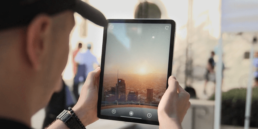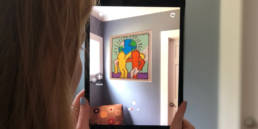Every day hundreds of people stroll around The Greenway enjoying its beautiful vistas and park’s amazing art. And this summer, anyone can also enter into a new dimension and unveil one of 16 virtual installations by tuning into The Greenway Augmented Reality channel on the Hoverlay platform.
In a curatorial partnership with Boston Cyberarts and Hoverlay, the Conservancy commissioned three prominent AR artists and Amy D. Finstein, a local historian to conceptually explore the themes of transportation and the automobile superimposed with views of The Greenway! The artists include Nancy Cahill Baker, Will Pappenheimer and John Craig Freeman.
The historic photographs shown within the augmented reality exhibit narrate more than a century of growth and change along the Rose Kennedy Greenway. These images capture the city’s changing economic prospects, its accommodations for new modes of transportation, and its embrace of city planning and modern engineering to address successive eras of challenges.
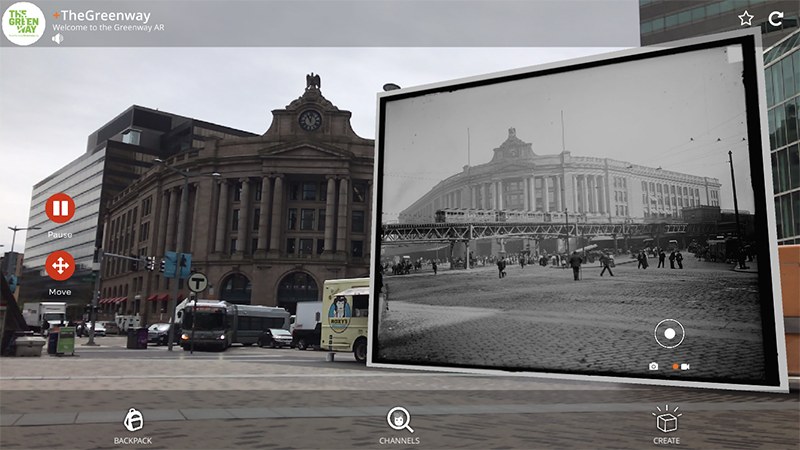
Many of you must be wondering what Augmented Reality (AR) is and how this emerging technology enables their phone cameras to magically enrich one’s surroundings with historic audio-enriched images and three-dimensional artistic installations. The magic of AR is simply part of the next computing “space frontier” called the Spatial Web.
Over the next few years, the world around us is about to light up with layers of rich, fun, meaningful, engaging, interactive, and dynamic data. Just like radio channels introduced layers of audio “data” that could be unveiled through a radio, Augmented Reality channels create layers of data you can see and interact with through your phone camera. Let’s dive into what this means and possible implications for our future.
Augmented Reality – An Enhanced View of The World
The boundaries between digital and physical space are disappearing at an amazing pace. What was once static and boring is becoming dynamic and magical. For all of human history, looking at the world through our eyes was the same experience for everyone. But all of this is about to change. Welcome to a revolutionary new medium called Augmented Reality.
Augmented Reality is a technology that gives your camera the ability to insert computer-generated digital content like images, audio, 3D models, video, and text as if they existed in the real-world. By combining real and computer-based scenes, your camera can enhance your view of the world via rich audio-visual experiences. Just like in sci-fi movies, AR simply adds to the reality you would ordinarily see, in real time, using your phone.
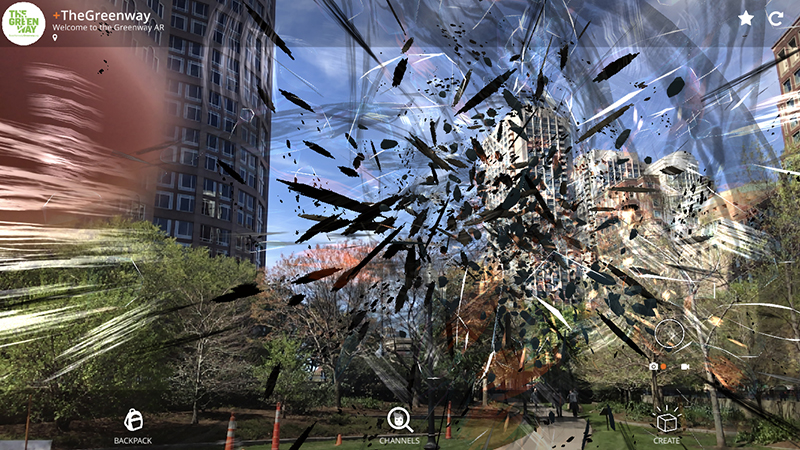
The Spatial Web – Blurring the Lines Between Physical and Online World
While we exist in three dimensions, our web today is flat. The web was initially designed for shared information absorbed via a flat screen. But as GPS, Computer Vision, thriving sensors, and pervasive data connectivity blur the lines between our physical and online worlds, the Spatial Web is an evolution of the web for a three-dimensional world.
The Spatial Web or Web 3.0 represents a new computing environment designed to align with physical 3-dimensional spaces, a type of “joint venture” between real and virtual realities, available to millions of mobile devices and accessed through Augmented Reality interfaces. It is experienced via “spatially aware” cameras. It is interactive and measurable just like the web is. It enables us to build a twin of our physical reality in the virtual realm and bring the digital into our real environments.
From the Deep Blue Super Computer to Our Pocket-Sized Supercomputers
The whole lot has changed since May of 1997 when IBM’s Deep Blue super computer won the highly anticipated chess match against Garry Kasparov, the world chess champion.
At the time of this “machine vs man” match, the Deep Blue supercomputer had a computational power of 11.38 gigaflops which was then considered “super” in every possible technological way. Fast forward to August 2019, Apple’s entry level phone possesses at least 257 gigaflops which is 22 times the computing power of Deep Blue. In just 22 years (no pun intended) the supercomputing became the new normal helping us in almost every aspect of our lives. These incredible computational advancements, now connected to high quality cameras optics, enabled the rise of Augmented Reality and the Spatial Web as new technological norms, now in reach to anyone.
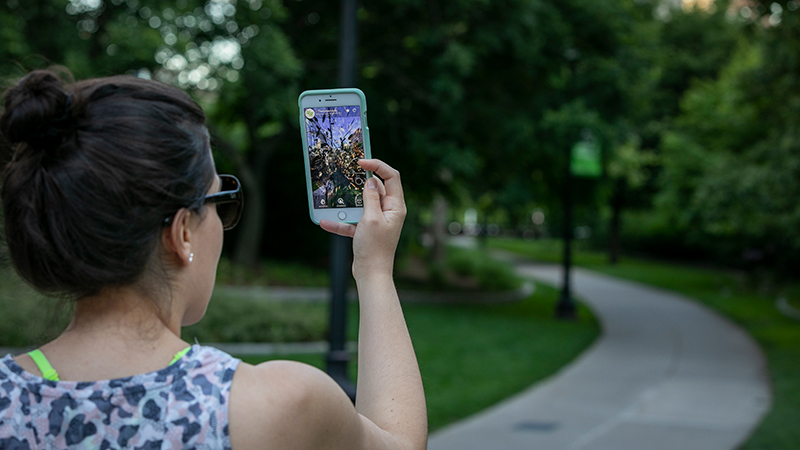
The Future of AR and the Spatial Web is Here
These days, the biggest technology companies like Apple, Samsung, Google, Microsoft, and Facebook give enormous focus to Augmented Reality. The phones and tablets will not be the only venue for AR. Connected glasses are just around the corner. The ultimate goal of Augmented Reality is to create a convenient and natural immersion, and new devices will emerge in support of that vision. From upcoming 5G connectivity, to new generations of highly precise GPS, to depth-sensing cameras: all points toward exponential improvements to the spatial web.
Public spaces will greatly benefit from augmented locations. In addition to art exhibits, like the Auto Show installation on The Greenway, there will be many new ways to use AR in cities, towns, parks and other public venues. For example: providing relevant info about development to better inform citizens how their tax dollars are being used, placing AR holograms at locations of historical context to be seen and heard by a crowd of people all at once, helping visitors to easily find or share digital content or points of interest, and many more. Information will be provided where and when needed, without the current digital clutter or need to “Google” what we need to know.
We will be able to spend more time interacting with each other rather than aimlessly staring at phone screens. Augmented Reality will enable us to get back our three-dimensional lives in their full glory.
Historical imagery courtesy of Boston Public Library (Leslie Jones Collection) and the Library of Congress (Detroit Publishing Company Collection).
Follow Hoverlay on Twitter, Instagram, Facebook, and LinkedIn.

